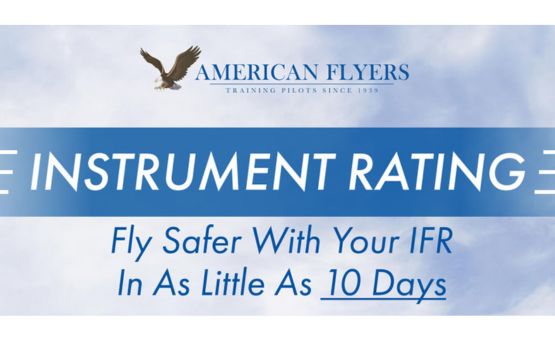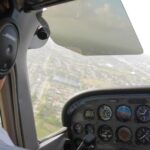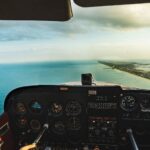By Steven Daun, National Chief Pilot
As the old saying goes: “just because you can doesn’t always mean that you should.” This can be said of many things in aviation. Many schools advertise a 10-day instrument rating and many pilots end up frustrated when they find that they can’t do it. So, does this mean that you shouldn’t try? No. What this means is that there are many things to consider when deciding to pursue a 10-day instrument rating.
American Flyers has been conducting instrument training for over OVER 80 Years. During that time, we have completed more 10-day instrument courses than any other school in the world. This article is designed to take you step by step through the process of having a positive outcome from a 10-day course.
STEP 1: PROFICIENCY
Before undertaking any accelerated course, you must be current and proficient in the certificate that you hold. You should also be very proficient in attitude flying and all of its components.
STEP 2: START READING
You should obtain a copy of the instrument training flight manual that you will be using for your course. The first readthrough is to become familiar with the concepts and ideas that will be discussed. Don’t worry about the details. Your goal should be to start building on what you already know.
STEP 3: THE WRITTEN
American Flyers offers a 3-day instrument rating ground school to prepare you for the FAA knowledge test. We teach you the information instead of having you memorize the answers. This means that it won’t matter what question is asked; you will be able to select the correct answer from knowledge rather than memory. This additional knowledge will help you as you progress through your course. Take a few practice tests and then take the knowledge test. Having this completed before starting your course will reduce much anxiety during your course.
STEP 4: PREPARE YOUR FLIGHT BAG
You should have a current sectional chart, low altitude en route chart, and a full set of TPP’s for the area in which you will be training. And yes, make sure that they are all current. Put a fresh set of batteries in your flashlight and headset (if you have one) and make sure that you know how to use both. Add a few pencils and a writing tablet to your bag so you can write down your briefings and clearance. We strongly recommend against using a tablet during your 10-day course.
STEP 5: PLOT OUT THE TRAINING PLAN
You should have a clear idea of what your schedule will consist of. Plan on 6 – 8 hours of training each day consisting of ground, simulator, and airplane. You will also want to make sure that you have at least 1 – 2 hours of solo simulator time available so you can practice on your own. It is also important to remember that the 10 days are for the signoff and do not include the checkride.
STEP 6: CONTINGENCY PLANS
If you have spent any time in the aviation industry, you know that “stuff happens.” We live in a world of weather, maintenance, schedules, and TFR’s. You should have a clear understanding of what the contingency plans are for each day of your training. This may mean either training at different times of the day, extending your course, or not having 10 consecutive training days.
STEP 7: EAT, DRINK, AND BE MERRY
Food, water, and attitude are the three major ingredients to ensure a successful course. Low blood sugar, dehydration, or a poor attitude can lead to poor performance and early burnout. Stay away from alcohol and high-fat foods during your course.
STEP 8: SLEEP
You must get rest during your training. Your training sessions will require you to function at a high level of focus and concentration. Getting enough rest will enable you to keep up with the demanding schedule.
STEP 9: FINISH WHAT YOU START
Expect that the first day will be great and exciting. By day four and five, you will start to feel the normal stresses associated with the training. This is similar to what a marathon runner may feel about halfway through the race. Days 6 – 8 start to fall in line, and you will find your routine. Your body and brain are now conditioned. By day 9, you start to realize that you can do this. By Day 10, you realize that you do have a solid grip on this, and you are now looking forward to your checkride.
STEP 10: CELEBRATE!
You completed your checkride and earned your instrument rating.
So, “just because you may” can actually mean that “you should.” By following these steps, you will be able to turn a stressful course into a successful course. You will be tired, but you will have a strong understanding of instrument flying. Now the only thing remaining is to use your new rating and stay current.










